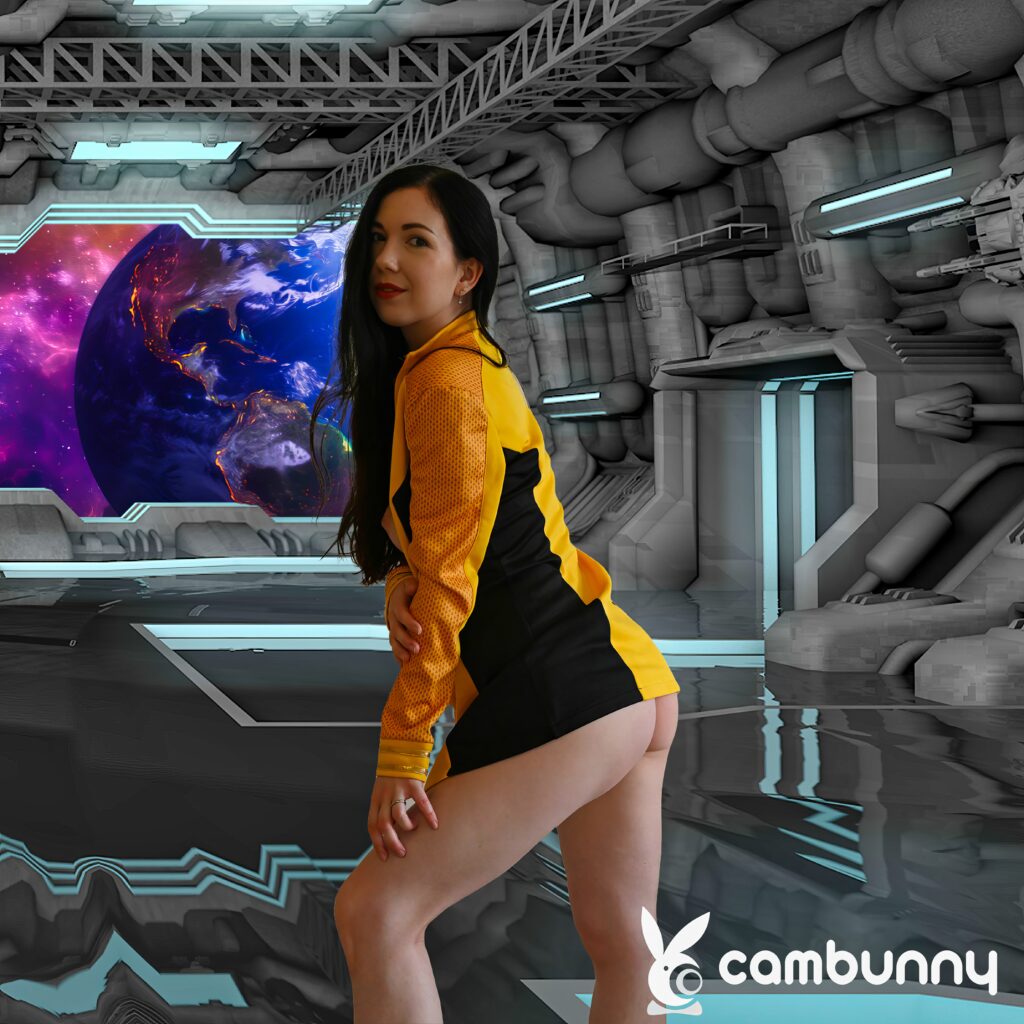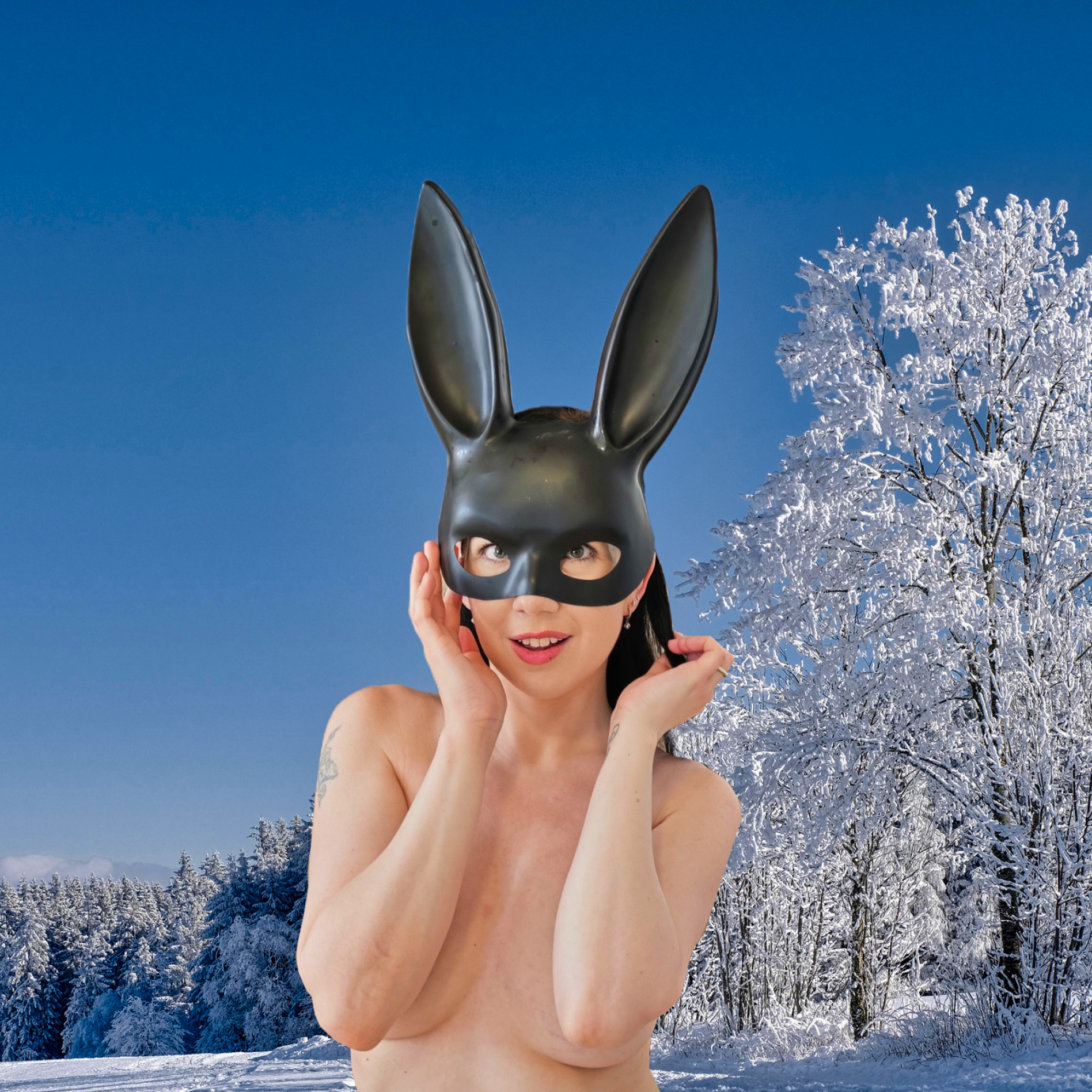Many of you know Cambunny isn’t some new pop-up in the adult industry. We’ve been around—some of us for decades—and while our assistant photographers may be newer to the scene, the backbone of this studio was built on real experience. Personally, I landed my first editing job in 2000 at Elstree Studios in Borehamwood—yes, the very same town that gave birth to Star Wars, Top of the Pops, and Monty Python's magic. Under the mentorship of the late, brilliant Paul Thompson, I learned the craft of continuity and the discipline of clean, story-focused editing. Paul passed earlier this year, and he left behind a standard that I still measure myself against today.
By 2008, I had already dipped into adult content, producing a few shorts. In 2015, I started collaborating with Naughty Natali—who at the time was brand new to the scene. That partnership became a catalyst. Natali’s experiences in the industry, particularly early on, were what led to Cambunny’s foundation.
You see, one of the fatal flaws in any creative industry is stagnation—failing to grow, failing to learn. That’s never been our way. I take ongoing training seriously. I completed my Advanced Diploma in Film Studies in January 2025—that’s my seventh or eighth credential related to film and media. And yet, on June 4th, 2025, I learned more in one shoot with Daphne Angel than I’d expected to.
Some of it came from Daphne herself, some of it from my own mistakes in post, and much from our internal retrospective, led by Stillwater, one of our partners. We believe in transparency, and we believe other studios, performers, and creators can benefit from our honesty. Because Cambunny wasn’t born to turn a quick profit—it was built to solve problems we saw hurting people.
How Our Chaperone Policy Was Born
Naughty Natali, like many models, came into the scene hopeful but found herself in situations that were exploitative at best, dangerous at worst. In chatrooms, men pushed her to do things she didn’t want to. She booked shibari shoots where photographers crossed intimate lines under the guise of “art.” She endured 14-hour video shoots without proper breaks. No one looking out for her. Just a girl with talent, trying to make it.
That’s why we built home studios—in the UK, Czech Republic, and briefly, the Netherlands (though we never operated there in the end). These studios weren’t just filming spaces. They were safe zones, built around six core models we knew personally and who trusted us. This wasn't just production—it was protection.
The chaperone policy was born from that exact need. When Daphne arrived, I explained it to her in full: instead of hiring traditional on-set security, we give models the right to bring someone they trust. A friend, a partner—someone who knows them and makes them feel secure. That chaperone must be ID-verified, can’t interfere with the shoot, and typically waits in a designated off-set area with access to refreshments and food. We reimburse reasonable travel costs and count their catering into the shoot budget. We don’t just allow this—we encourage it. Safety isn’t a gimmick here. It’s policy.
Daphne told us this setup felt like a breath of fresh air. That stuck with us.
Industry Patterns: The Relentless Shooter
When we sat down to fill out Daphne’s onboarding paperwork, another familiar story surfaced: she’d worked with a photographer who believed in relentless shooting— he was seemingly impatient about human limits. And she’s not the first model to report this. This is the third—maybe fourth—time we’ve heard about this high-pressure, nonstop environment from freelancers and other studios.
Here’s the problem: models aren’t machines. What you’re asking them to do is physically and emotionally demanding. Expecting perfect output for hours without pause is both unrealistic and unethical.
So here’s the fix: We mandate a 20-minute break between sets as standard, no exceptions. Lunch is not optional—it’s scheduled. If the shoot goes longer than 5 hours, we bring in stretch breaks. We also build a pause mechanism into the day’s pacing, so models know they have breathing space.
Freedom Needs Structure: Failsafes and the Test Shoot Problem
The shoot with Daphne was designed as a “test”—not a specific film, but a chemistry check, skill showcase, and mutual feel-out session. We’ve found that giving models creative input in this format leads to better performances and more honest expression.
But while this approach works in theory, in practice we missed something critical: failsafes.
Daphne, like many pros, came in used to rigid structures. When we handed her the reins, she adapted beautifully, but some might feel blindsided. Freedom is empowering, yes, but it needs to be scaffolded. We’re now implementing inspiration cards even for test shoots. These themes, and pacing, if a model cant think of something she WANTS to do off the top of her head, she can flip through the cards and get ideas and simply select a scene—plus a “panic button” option for models to signal if they feel uncomfortable, tired, or need to stop without feeling awkward.
Daphne didn’t panic—she thrived. She noticed how warm the studio was and suggested wrapping the session with a shower scene. Smart, sexy, and simple. We had one short scripted clip, and thanks to her improvisation, we walked away with five strong segments. But it could have gone differently without someone of her intuition.
Technology Lessons: The Camera Limit Fiasco
We told Daphne each clip would run roughly five minutes. Historically, our 8K cameras had a hard recording limit of about six minutes. That cap was useful: it forced natural segment pacing, gave the model a countdown warning, and kept editing manageable.
But surprise—a firmware update removed the time limit. No warning, no countdown. At six and a half minutes, the recording just kept going. Nobody caught it in time. She got a late cue to wrap the scene. As the cameras would historically of shown us a countdown and now no longer do.
That’s on us. This was a breakdown in our standard operating procedure.
Our solution going forward:
- External stopwatches used by the camera operator and shoot director.
- Verbal cue systems if the model is comfortable with them.
- Clear segment boundaries noted on shoot plans, even for test sessions.
- All gear firmware will now be manually verified the day before each shoot.
Studio vs. Home Base: Space Can Be a Trap
We shot this session in a rented third-party studio—big, bright, beautiful. The kind of space you get excited to work in. But that excitement blinded us to some key technical issues. Our home studios are engineered for video—we designed them with consistent lighting, treated walls, controlled acoustics. This place was built for photo work, and it showed.
Color grading disaster: The studio had textured grey wallpaper. Fine for photography—absolutely hell for video when you’re running five cameras at different angles. Each lens caught slightly different hue shifts due to light reflection off that wallpaper. No reference panels meant no color neutrality. Grading took five hours and still wasn’t perfect.
Fix: We're now adding portable grey cards and reference boards to every off-site shoot. We’ll also test each angle with a grade sample frame before starting content capture.
Sound: The Unseen Nightmare
Our home studios are built for sound—literally. The walls are made with noise-deadening plaster, ceilings have sound-canceling panels, and behind the camera we’ve constructed a large foam baffle wall to absorb echo. We’ve always taken pride in our clean audio, and until this shoot, it didn’t occur to us just how spoiled we were.
The rented studio? Echo chamber. No acoustic dampening. The hard surfaces bounced every bit of ambient noise back into the mics. We used RØDE shotgun mics mounted on cameras, but the distance and the room’s size made everything sound flat and hollow. Syncing audio from the first clip took eight hours. Eight. And even then, it lacked the clarity we consider standard.
Solutions going forward:
- Portable baffle boards.
- Bringing at least one overhead mic rig for wide shots.
- Adding lav mics for close-range backup.
- Testing room acoustics pre-shoot and making a call if the sound is unrecoverable.
We lost time, yes—but thanks to Daphne’s performance, we didn’t lose quality. Her expressiveness cut through the technical failings. Still, that’s luck, not process—and we won’t rely on luck again.
Lighting: The Invisible Skill
Lighting is one of those things that, when done right, no one notices. When done wrong? You can’t look away. Early in my career, I spent far too long trying to correct exposure in post. That’s why I engineered the lighting grid in our Czech studio: mounted, distributed lighting that makes the whole space even, soft, and ready to shoot. It removes the guesswork—and for someone who isn’t a trained lighting tech, it’s been a lifesaver.
This third-party studio had none of that. The result? Inconsistent light across scenes. Daphne still looked great—because she is great—but we lost hours fixing frame-to-frame variance.
Daphne: A Performer’s Performer

Despite every technical snag, Daphne Angel delivered. She danced, she skipped, she teased, and she owned the space. She flowed effortlessly between scenes, read the room intuitively, and even spotted practical ways to improve the shoot (like ending with a shower). Daphne has that rare performer’s instinct—you give her freedom, she gives you fire.
She’s a cosplay lover, a vinyl collector, and a book junkie. She doesn’t perform for money—her OnlyFans is free, and she asks not to be tipped. Instead, she suggests buying her a book or a record if you love her content. That says everything.
And yes, she debuted a new Slut Trek character: Jedna-Rajcovní Prdelínová, a wild parody of Una Chin-Riley. The short was staged in a holodeck simulation—a practical way to create a sci-fi set without budget-busting. She looked phenomenal in uniform, and the scene plays like the perfect absurd teaser for bigger things to come.
Final Thoughts
Daphne made our first shoot in a third-party space a win. She rolled with every hiccup, and in doing so, helped us evolve. We’ve already improved our prep process, our gear checks, our backup systems—all because one model showed up with talent, heart, and ideas.
Please go support her:
🔗 Instagram: @lucinda_cz
🔗 Wishlist: Amazon.de Wishlist
🔗 OnlyFans: Free, https://onlyfans.com/daph_angel
We hope to work with her again, and we hope this retrospective reminds you: every shoot is a chance to improve. Even for the veterans. Especially for the veterans. Please make sure you check her links as you wait for her content edits to go live.
